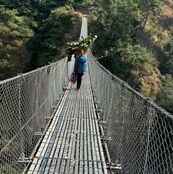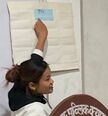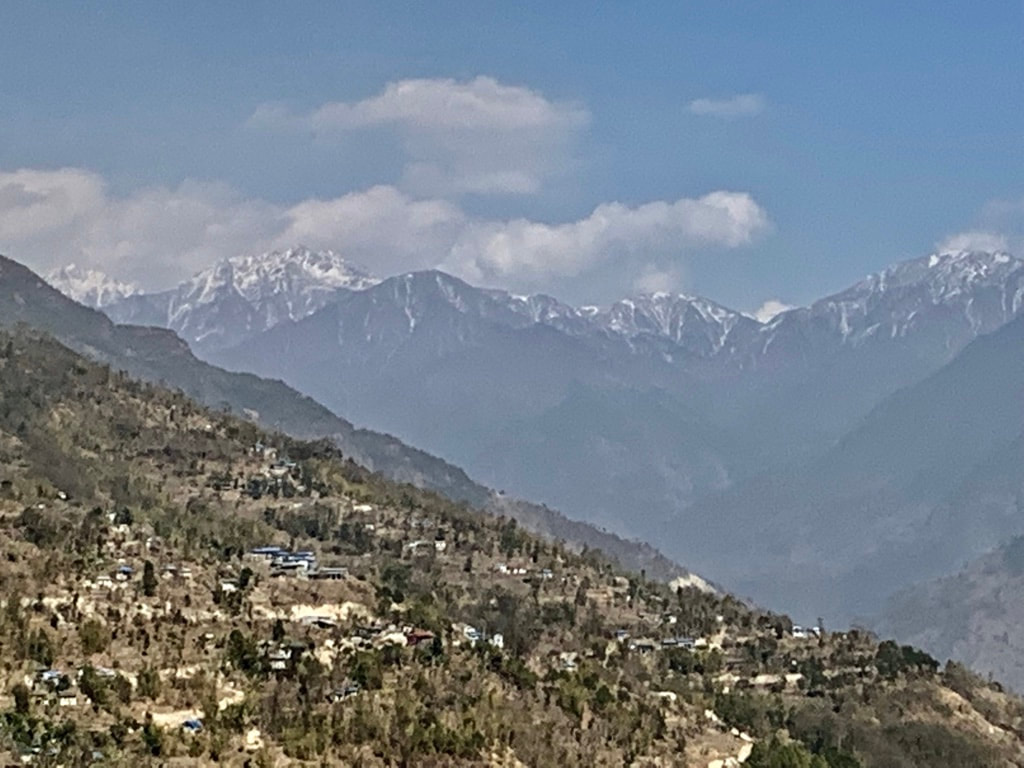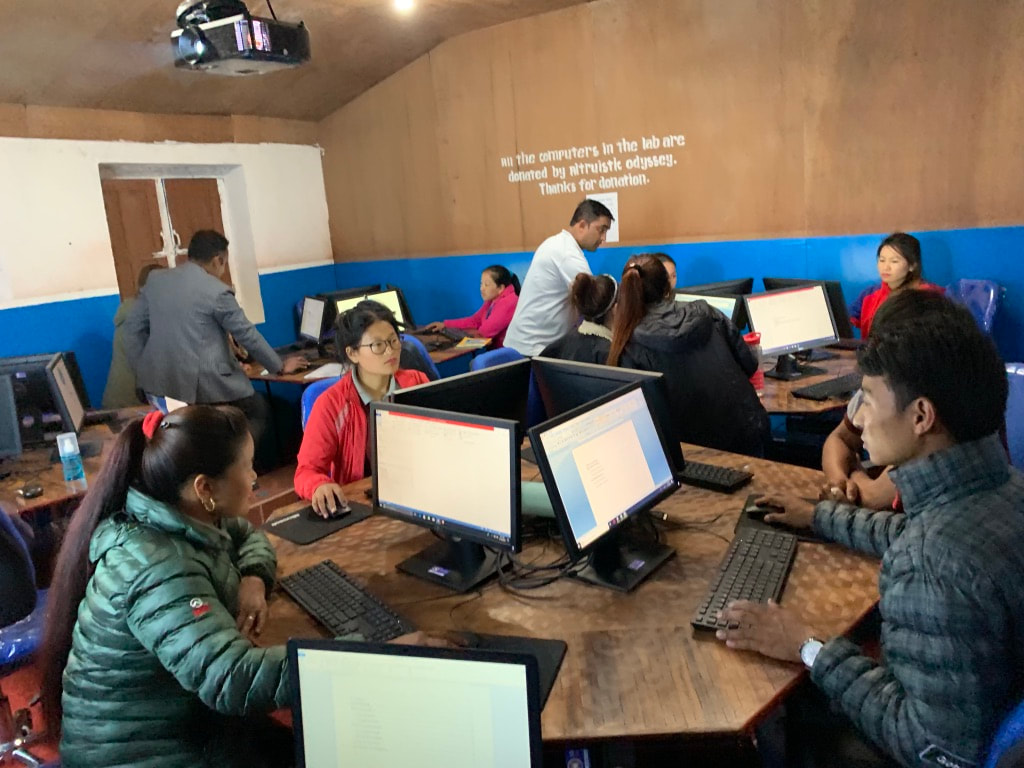What Problem is Altruistic Odyssey Trying to Address?

We visited the rural community of Sotang for the first time in 2017, and then again in 2018 and 2019. The path for Sumo Jeeps was not finished at that time, and we had to cross a suspended bridge over the Dudh Koshi River to hike to Sotang. We loved the environment. The health post was in need of medical equipment, and we brought some when we visited in 2018. We then met with the Village Development Council, the Health post management council, and also were introduced to a new remote campus that they had just opened in order to be able to offer a Bachelor of Education, and accept students that had completed Grade 11 and 12. Ishwor Timalsena, the head of this campus, gave us a tour of the new facilit. He then made a request: “Would you be able to help us, as the Nepali Education ministry just requested that we taught student teachers in their 4th year ICT, Information Communication Technology, as they want to integrate basic computer skills in their curriculum”. It was impossible to provide a quality ICT education and fulfill the new government rules.
We found the project feasible, and extremely useful. We discovered that the Nepali Government, as well as the UN, had plans to promote ICT education, so remote rural areas would be equipped in the future. We found that notion to be so congruent with today’s world that we made it our primary focus as of 2019. In addition, we believed that internet access was the biggest barrier we would face. Nepal had relied mostly on cell towers to provide internet access through cell phones that were actually flourishing in the hilly regions of Nepal, but not in more remote regions
We found the project feasible, and extremely useful. We discovered that the Nepali Government, as well as the UN, had plans to promote ICT education, so remote rural areas would be equipped in the future. We found that notion to be so congruent with today’s world that we made it our primary focus as of 2019. In addition, we believed that internet access was the biggest barrier we would face. Nepal had relied mostly on cell towers to provide internet access through cell phones that were actually flourishing in the hilly regions of Nepal, but not in more remote regions
How will the Program benefit the community?

We found that helping rural communities access the world through internet-based computer learning was a paramount project that would serve not only the students, but by and large the entire rural community. Initially, the project would benefit the Public Campus, and eventually we would be able to scale and offer access to others in the community.
Who are the local partners and do we engage them?

Our first partner was the College Principal, Mr Ishwor Timalsena. Other partners included members of the Village Rural Committee, and of the College Management Committee. One member was particularly active and visionary, Laxmi; she had been the village nurse in the Health post, and after she retired, she got very involved in both the health post, and the new college. She is a great supporter of us.
What was the role of AO Nepal and our team there?

Our Coordinator at the time made two trips, and our new AO Nepal Coordinator of projects, Prakash Shrestha, went to Sotang, spending a full two weeks helping fine tune our installation, and also taught several classes. Prakash has an IT degree, and is very good with people, very patient. We also had Prava Adhikari, one of our board members, interact with the college principal, being very helpful with translation. Ed was very involved as program director, and went there once in 2018 and twice in 2019. On the second trip, and after seeing both installations, we decided to really innovate and created our first CLEC with the help of all involved.
How did we build our program?
We built our program in 2 phases. In 2018, we only provided computer equipment, including 8 desktops, 8 monitors, a router, and a power generator. . In 2019, we brought custom furniture to accommodate the new collaborative design we had created, as well as additional IT equipment and a video projector. The total cost of the project was $14,700, with $9,000 allocated towards IT and computer equipment, and $5,700 for the furniture.
What was our budget?
Our initial budget was $12,000 initially, with an extra $6,000 being budgeted for the second delivery in 2019. The first proposal was amended based on the initial design of the room, prepared by the college itself.
What were the main challenges we encountered?

The main challenge we faced was internet access. It took us a while to understand what was really needed. The second challenge was power, as there can be some significant shedding, and a generator is needed. The third challenge was transporting the equipment and furniture safely, as well as varying transportation costs. The fourth was the installation itself, as glitches that can happen, especially with the amount of electrical wires we had. The fifth and critical one was finding qualified and engaging teachers who were the best fit to teach the ICT class.
How did we make it happen?
We solved all of our issues with internet access through our two advisors in Nepal; one works for Nepal telecom, and the other is the CEO of a company that provides equipment for distance learning. The fact that our coordinator had an IT degree and is a natural teacher was a big plus.
Finally, the resilience of the Nepali people, whatever the circumstances, was of tremendous help. There was always collective support from the community, which contributed to the success of the project.
On the teaching side, we suggested placing a second teacher in the room to support with English, as ICT is taught in English rather than Nepali. We also accepted to pay for a second hour per day of ICT teaching, as the CLEC is limited to 16 students at a time.
Finally, the resilience of the Nepali people, whatever the circumstances, was of tremendous help. There was always collective support from the community, which contributed to the success of the project.
On the teaching side, we suggested placing a second teacher in the room to support with English, as ICT is taught in English rather than Nepali. We also accepted to pay for a second hour per day of ICT teaching, as the CLEC is limited to 16 students at a time.
What still needs to be solved?
We still need to adapt the room to distance learning. The first step was to convince the college to bring a dedicated internet line allowing for enough speed to download or upload. We will need to also contribute to a portion of the bill based on the speed requested, (50%)
how do we intend to follow up our program? what do we expect our partners to fulfill?
How do we engage our local partners for the long haul?

We intend to develop community engagement and show some of the benefits of having this equipment. For example, a graduate of the campus in Sotang decided to shift gears, creating a new farm planted with banana and fruit trees, as well as buying cows to produce milk. We followed his story, and suggested that he connect with a small innovative farm in Canada. With internet access, he can be connected and adapt ideas to his environment in order to be successful without needing to relocate from this rural region.
We hope that other people can access the CLEC in the future, and will continue to engage the community to reach this goal. If we can help people stay with their families, farm, do commerce, or teach locally, we help avoid an exodus to urban regions of Nepal or other countries, and allow cultures in these remote regions to continue to thrive.
We hope that other people can access the CLEC in the future, and will continue to engage the community to reach this goal. If we can help people stay with their families, farm, do commerce, or teach locally, we help avoid an exodus to urban regions of Nepal or other countries, and allow cultures in these remote regions to continue to thrive.










